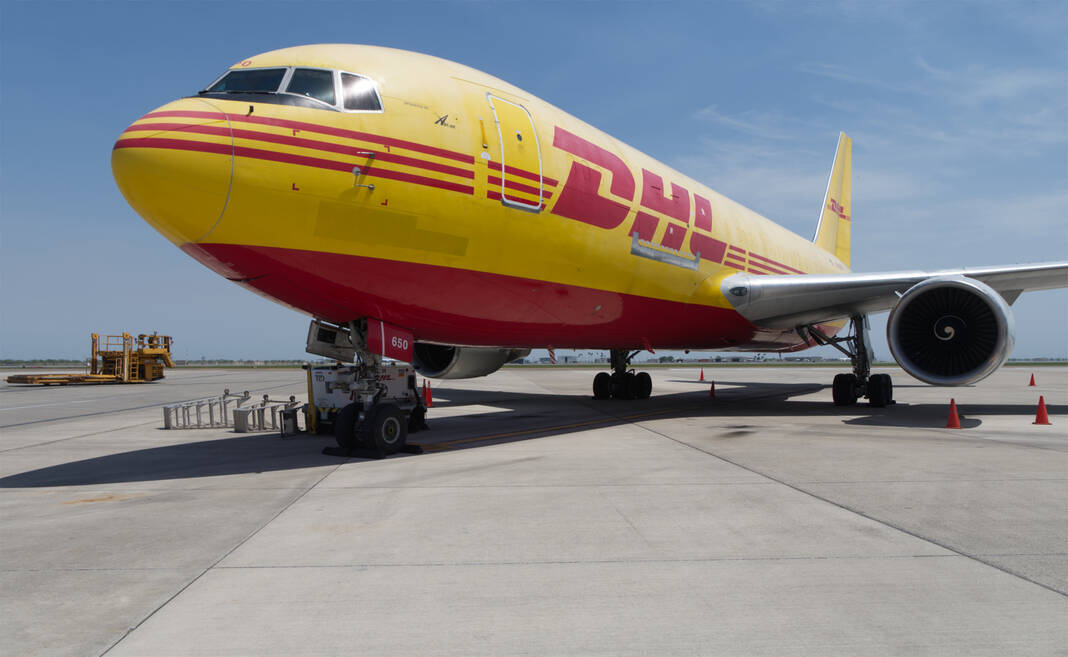
HARLINGEN — Air cargo numbers at Valley International Airport were down in October, with FedEx leading the trend.
“Ten-point-four percent down in enplaned cargo for the month and deplaned cargo was 9.7 percent down, so we’re starting the year at 7.7 percent down over last year,” Marv Esterly, director of aviation at VIA, told the airport board this month.
“It’s nice Southwest Airlines is seeing an uptick in cargo traffic, mainly because they have more belly space,” he added. “More aircraft and more belly space to send cargo out.”
Last month, Southwest was mostly responsible for the airport enplaning 38,015 passengers, a 26.4-percent increase over last October. Southwest hauled 24,195 of those passengers.
Cargo-wise, Southwest was a distant second to FedEx, which saw its total tonnage drop 10.4 percent in October, although Southwest was up 23.8 percent in cargo from a year ago.
For the past fiscal year, which ended Sept. 30, VIA saw its total cargo tonnage drop 8.7 percent.
Air cargo at VIA and elsewhere enjoyed boom times during the height of the pandemic due to online purchasing, and with COVID on the wane, it seems natural for air freight to decline.
But there are major concerns this holiday season about U.S. retailers scaling back on import orders, a signal of either overstocked inventories or weak demand, or a bit of both, and that is being reflected in the transportation industry.
Staff cuts
FedEx Corp. is preparing to furlough an unspecified number of drivers next month. The voluntary furloughs will last for three months and workers will continue to receive health care benefits and will be eligible for state unemployment benefits.
“Because of our previous experience with furlough and with the incentives we are offering, we are expecting employees to volunteer to meet the business need,” FedEx Freight spokesperson Miranda Yarbro said in a statement.
FedEx Freight is the less-than-truckload division of three transport units of FedEx Corp., the others being FedEx Express and FedEx Ground, both of which have been dealing with higher costs due to fuel prices and a drop-off in consumer demand.
Yet it is unusual for something like furloughs in the transport business to occur just before the Christmas holiday season, usually a highly active time for shipping firms.
Amazon, a major delivery player in its own right, also is planning layoffs, the New York Times reports.
The layoffs of about 10,000 employees in human resources, retail, and devices divisions is imminent, the newspaper reported.
Shares in FedEx have dropped 31 percent this year and Amazon is down 41 percent.
Ports slow
Remember those mass queues of ocean-going freighters backed up waiting to unload at West Coast ports a year or so ago? Those are gone.
The ports in Los Angeles and Long Beach, California, handle about 40 percent of all cargo containers coming by ship into the United States.
Gene Seroka, who runs the Port of Los Angeles, said it was the slowest October for the port since 2009.
It seems many U.S. companies are overstocked with inventory, forcing them to reduce or cancel overseas orders since consumer demand is not there.
Target’s misses
Target Corp. executives announced this month that customers are reducing spending, and the retailer missed its consensus estimate numbers in both sales and earnings.
In fact, Target projects a drop in comparable sales for its fourth quarter, which would be the first time that has occurred in the past five years.
Third-quarter operating income for Target was $1.02 billion, nearly 50 percent under last year’s number, and $340 million under estimates. Execs say they’re looking to reduce expenses but say layoffs are not being considered at present.
“Clearly, it’s an environment where consumers have been stressed,” CEO Brian Cornell told reporters in a conference call. “We know they are spending more dollars on food and beverage and household essentials, and as they are shopping for discretionary categories they are looking for promotions.”
Walmart, on the other hand, reported strong third-quarter earnings this month, sending its stock price significantly higher.
But half of Walmart’s U.S. revenue comes from groceries, while Target’s core business lies elsewhere, in home goods, electronics, clothing and beauty.
As consumers continue to wrestle with inflationary pressures — the current annual inflation rate in the U.S. stands at 7.7 percent — it appears groceries are being made a priority over items buyers regard as being of lesser immediate need.



